An ISP (internet service provider) is a corporation that offers access to the internet and other associated services to consumers and businesses. An internet service provider (ISP) has the necessary equipment and telecommunications line access to function as a point of presence on the internet in the geographic region covered.
Cheap internet service provider (ISPs) enable clients to connect to the internet while also offering extra services such as email, domain registration, and web hosting. ISPs may also provide multiple forms of internet connections, such as cable and fibre. Connections can be either high-speed broadband or non-broadband. According to the Federal Communications Commission (FCC), a high-speed connection must have download rates of at least 25 megabits per second (Mbps) and upload speeds of at least 3 Mbps.
An internet service provider (ISP) is sometimes known as an internet access provider. Internet service provider (ISP) is frequently used as an acronym for an independent service provider to differentiate a service provider that is not owned by a telephone company.
How do ISPs operate?
Internet service providers (ISPs) have access to one or more high-speed internet connections. Larger internet service providers (ISPs) have their own high-speed leased lines, reducing their reliance on telecommunications providers and allowing them to deliver better service to their consumers.
ISPs also maintain thousands of servers in data centres, the number of which is determined by their internet service region. All client traffic is managed by these massive data centres. A number of ISPs are also linked to huge backbone routing facilities.
ISPs are classified into three categories:
- Tier 1 Internet Service Providers: These ISPs have the greatest worldwide reach and have enough physical network lines to handle the majority of traffic on their own. They also bargain with another tier 1 networks in order to allow free traffic to pass through to another tier 1 provider. Tier 1 Internet service providers frequently sell network access to Tier 2 ISPs.
- Tier 2 Internet Service Providers: These ISPs have a regional or nationwide footprint and serve as service providers for tier 1 and tier 3 ISPs. They must pay for access to bigger tier 1 networks, but they share peers with another tier 2 ISPs. Tier 2 networks provide service to both residential and business users.
- Tier 3 Internet Service Providers: These ISPs connect clients to the internet by utilising the network of another ISP. Tier 3 ISPs utilise and pay higher-tier ISPs for internet access. They are primarily concerned with providing internet access to local companies and consumers.
ISPs offer the following internet services:
- Cable: This service makes use of coaxial cable, which is the same sort of cable used to carry television. Cable internet offers low latency, which is beneficial to consumers that require less delay or lag time. Cable provides download speeds ranging from 10 to 500 Mbps and upload speeds ranging from 5 to 50 Mbps.
- Fiber: Fiber internet transmits data over fibre optic cable at much faster rates than cable or digital subscriber line (DSL).Fiber boasts download speeds ranging from 250 to 1,000 Mbps and upload speeds ranging from 250 to 1,000 Mbps. Online gamers and other heavy internet users will benefit from fibre.
- DSL: DSL uses a telephone connection to link people to the internet. It is widely available, although it is being phased out in favour of more dependable broadband connections such as cable and fibre. DSL is slower, with download rates ranging from 5 to 35 Mbps and upload speeds ranging from 1 to 10 Mbps. It is an excellent choice for people who mostly surf the web or watch TV on a single device.
- Satellite: Satellite internet connectivity operates by utilising communication satellites. Ground stations provide and receive internet data as radio waves to and from satellites in low Earth orbit and further ground stations. Satellite is slower, with download rates ranging from 12 to 100 Mbps and upload speeds ranging from 3 to 3 Mbps, but it is an excellent alternative for people in distant places.
Most ISPs provide a mix of these services
What are some instances of ISPs?
According to an independent study by BroadbandNow and FCC statistics, there are over 2,900 ISPs in the United States. These ISPs provide a wide range of services. HughesNet, Viasat Internet, AT&T Wireless, Verizon, and T-Mobile are the top five ISPs in terms of projected population coverage.
Tier 1 ISPs include the following U.S.-based firms:
- AT & T
- CenturyLink
- Sprint
- Verizon
Tier 2 ISPs include the firms listed below:
- Comcast
- Cox Communications, Inc.
- Telecom CTS
Tier 3 ISPs are comprised of smaller regional and local providers.
How to Select an ISP Service Provider
Users should select an ISP based on numerous variables, including the ones listed below:
- Areas of coverage Which suppliers provide service in the user’s area? If the user lives in a remote region, his or her alternatives may be limited.
- Services that are provided Does the ISP provide online security in addition to cable, fibre, DSL, or satellite? Email access for free? What is website hosting? What about Wi-Fi mesh networks? Check if the ISP’s offers meet the user’s requirements.
- download and upload speeds. Will the user be playing online games or working from home using video conferencing? Both demand varying degrees of service. At least 25 Mbps of bandwidth is required to stream 4K video, for example.
- Pricing. Does the ISP combine services like the internet, phone, and TV, and if so, does this save money? Is there a data limit? What about the cost of the equipment? Is there a written agreement?
In order to manage traffic and remove network congestion, ISPs may throttle, or slow down, a user’s internet speed. When a customer hits a certain data limit, ISPs may restrict the user’s internet speed. Throttling, on the other hand, contradicts the concept of net neutrality, which holds that ISPs should treat all internet traffic equally.
ISPs, for example, might opt to limit particular websites that consumers visit merely because they consume a large amount of data. In the past, ISPs throttled their customers’ internet connections when connecting to Netflix, reducing the user experience on Netflix’s platform.
Best Cheap Internet Service Provider Near Me 2022
Here are some best internet service provider Options of 2022.
#1. Xfinity
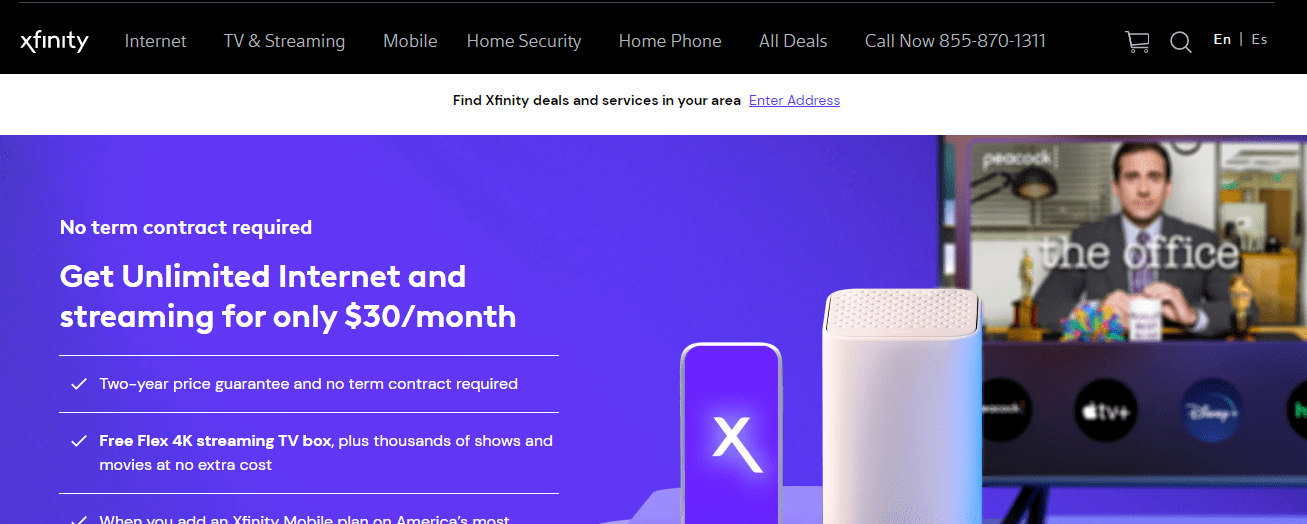
Xfinity: In our Best Cable ISPs of 2022, Fastest High-Speed ISPs, and Best Prepaid ISPs rankings, Xfinity ranks first. It primarily provides cable plans with two fibre plan options. Pricing is competitive, with prepaid rates starting at $45 and monthly rates ranging from $29.99 to $299.95 for the best speeds. Xfinity has a 1.2 TB data restriction on its plans, while some states in the Northeast are exempt. Xfinity’s 12- or 24-month contracts, as well as optional bundles including TV, streaming services, and home security, provide the best value.
#2. Cox
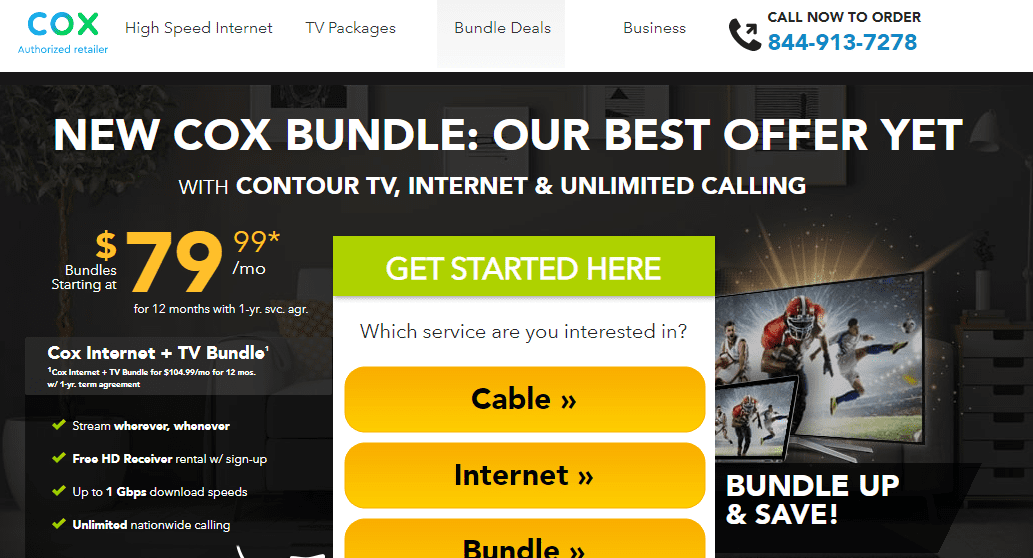
Cox: Cox is ranked fourth in our 2022 Best Internet Service Providers and Best Fiber Internet Service Providers rankings. It is a diverse ISP that provides prepaid options as well as cable and fibre connections. If you sign a 12-month commitment with Cox, you might enjoy introductory prices that could save you money on your internet bills. Rates begin at $29.99 per month for download rates of up to 25 Mbps and rise to $99.99 per month for the company’s best plan, the Gigablast, which delivers download speeds of up to 940 Mbps. Cox limits data to one terabyte (TB) per month. It does, however, provide packaged services that include streaming services, technical assistance, and home security systems.
#3. AT&T Internet

AT & T Internet: AT & T primarily provides fiber, DSL, and fixed internet services in the Southeastern United States, certain Great Lakes states, as well as California and Nevada.AT&T is our Best Overall ISP and ranks first in our list of the Best Fiber ISPs of 2022. Its fibre options start at $55 per month for download speeds of up to 100 Mbps. AT&T’s greatest alternatives are available in urban regions, while that outside of cities may have access to its DSL or fixed internet services. If you want to save money, there are bundles available, including DirecTV. AT&T’s fibre offerings no longer require a contract and provide unlimited bandwidth.
#4. Verizon Internet

Verizon Internet: Depending on where you reside, Verizon provides fixed mobile broadband (LTE or 5G), fibre, and DSL options. If you reside in a big metropolitan area in the Northeast of the United States, you will most likely have more alternatives than if you live in a more rural region, where DSL is sometimes the only available internet option. Verizon’s fibre services are well regarded, helping the business tie for second place in our ranking of the Best Fiber Internet Providers. Pricing for Verizon’s 300 Mbps plan starts at $39.99; $64.99 for the 500 Mbps plan; and $89.99 for the Gigabit Connection. The plans are not contract-bound, and internet access is limitless.
#5. Mediacom

Mediacom: Mediacom provides affordable internet services and is ranked top in our Best Cheap ISPs of 2022 ranking. This cable provider provides three different plans. The cheapest package is $29.99 per month ($19.99 for the first year) and features download speeds of up to 60 Mbps. Because Mediacom’s connections are via cable, upload speeds will be slower than download rates. The 1 Gig package, on the other hand, offers download speeds of up to 1,000 Mbps and upload rates of up to 50 Mbps. With these speeds, Mediacom is among the best cable ISPs and best ISPs for gaming in 2022. Its data limitations range from 200 to 6,000 gigabytes, and there is no commitment necessary.
#6. Spectrum
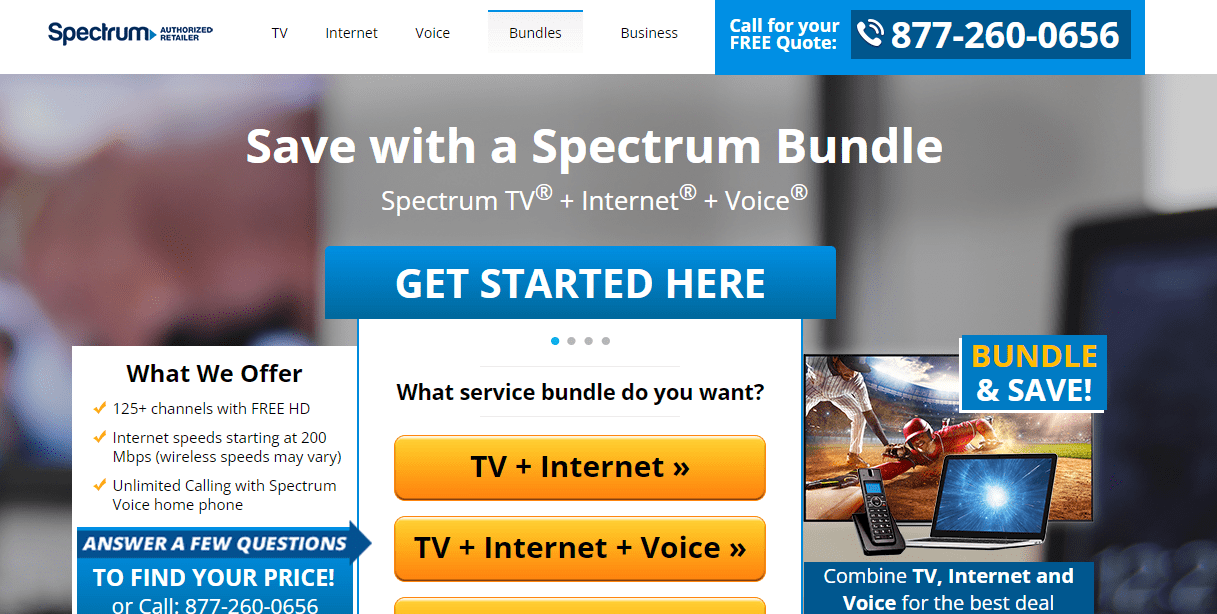
Spectrum provides cable internet plans to the majority of the United States, with the exception of a few Midwestern states, Hawaii, and Alaska. Plans start at $49.99 per month for download speeds up to 200 Mbps and go up to $940 Mbps. Its upload rates are limited to 35 Mbps, which is typical for cable connections. When you sign up with Spectrum, you get unlimited data and no contract. If you want extra services, you can save money by grouping them together. If you’re searching for a package, Spectrum provides TV, internet, and phone.
#7. CenturyLink
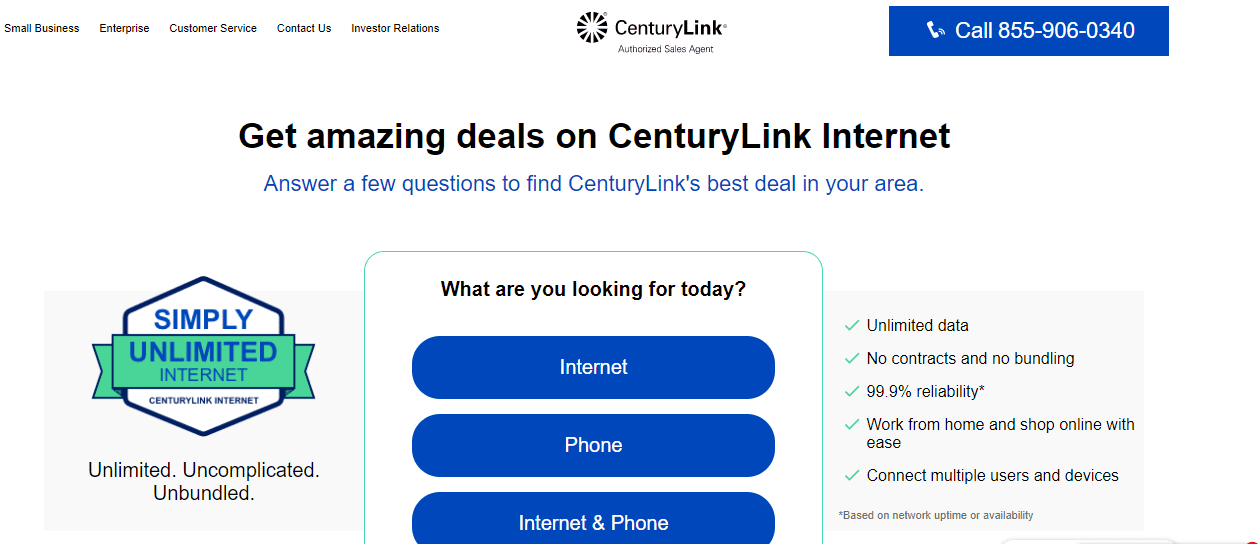
CenturyLink: In 36 states and 19 cities, CenturyLink provides two options that include DSL or fibre internet connections. There is no commitment required to use its services, and if you are looking for a low-service option, CenturyLink provides “Price for Life.” Its Price for Life policy keeps your monthly cost constant for the length of your CenturyLink cheap internet service provider. Its fibre costs $65 a month and offers download speeds of up to 940 Mbps. In comparison, its DSL package, which delivers far slower download speeds of up to 100 Mbps and costs $50 per month, is much more expensive. CenturyLink’s fibre service provides unlimited bandwidth, although its DSL plan has a monthly data maximum of 1 TB. For both plans, internet and phone bundles are available. Its modem has parental controls as well as the ability to establish groups and halt devices.
#8. Astound Broadband
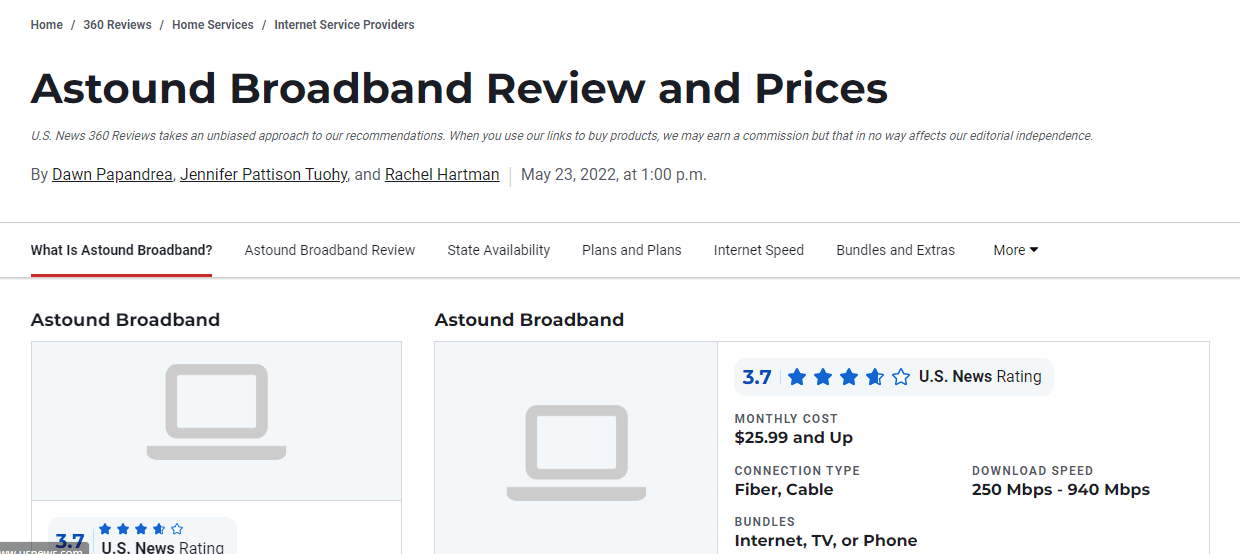
Astound Broadband, formerly known as RCN, offers low-cost cable and fibre internet options to customers in the Northeast United States and Washington, D.C.Its plans begin at $25.99 per month and provide download speeds of up to 250 Mbps. The middle-tier plan costs $44.99 per month for download speeds of up to 500 Mbps, while the best package costs $54.99 per month for download speeds of up to 940 Mbps. There are no data limitations or contracts to bind you to a service. If you test Astound and are displeased with its service or internet quality, the firm will refund your money within 30 days. Many services, including TV, phone, internet security, and smart home security systems, are available in bundles and with discounts.
#9. HughesNet

HughesNet: HughesNet will remain the No. 1 satellite internet service provider in 2022. It is also ranked first in the Best ISPs for Rural Areas because of its nationwide accessibility. When land-based connections such as DSL, cable, or fibre cannot reach your house, HughesNet offers another option for connecting to the internet. If your home has a clean line of sight to the southern sky, you should be able to use satellite service for internet access. Satellite, however, is not the ideal solution for gaming because of its significant latency. In our evaluations, HughesNet’s entry-level pricing is higher than the national average for ISPs. Download speeds of up to 25 Mbps and upload rates of up to 3 Mbps are available for all plans. Hughesnet offers no data restrictions and allows you to purchase data tokens as needed for an extra fee.
#10. Frontier
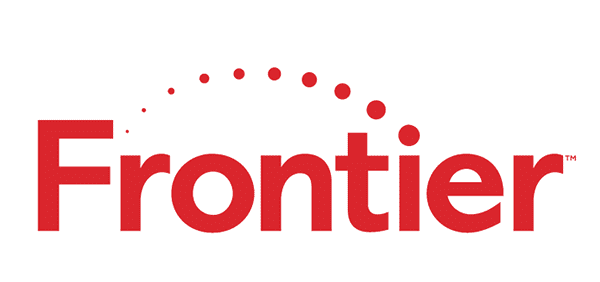
Frontier: Due to its low latency, Frontier ranks first among the best ISPs for gaming in 2022. (amount of time it takes to relay data from one point to another). It ranks eighth overall and provides fibre and DSL internet access in 25 states. Monthly costs range from $34.99 to $79.99 for its fastest plan, which offers download speeds ranging from 50 to 940 Mbps and upload speeds ranging from 50 to 880 Mbps. All plans offer unlimited data, and there is no commitment necessary at the time of signup.
FAQ’s
What services does an Internet service provider offer?
An Internet service provider (ISP) is a corporation that provides both business and consumer online access. Other services that ISPs may offer include email, domain registration, web hosting, and browser services.
How do internet service providers deliver the internet?
ISPs provide Internet access by utilising a variety of methods to connect consumers to their network. Computer modems with acoustic couplers to telephone lines, television cable (CATV), Wi-Fi, and fibre optics have all been available.

